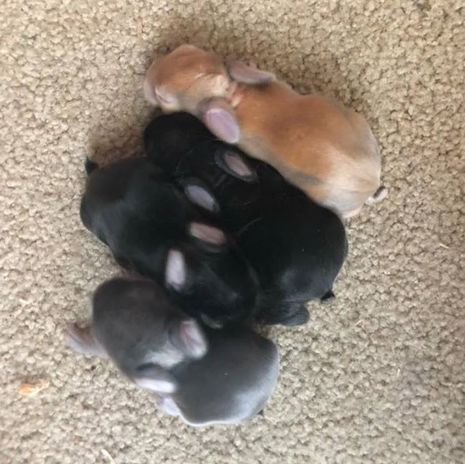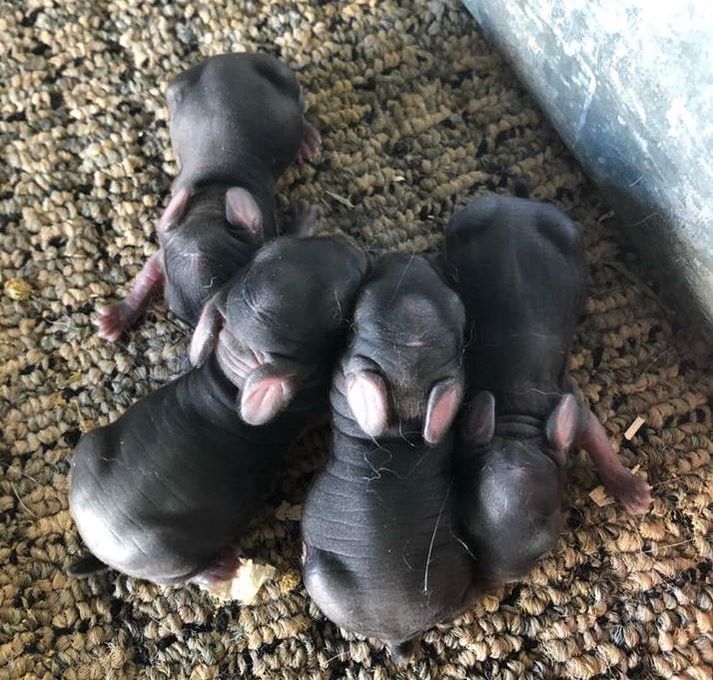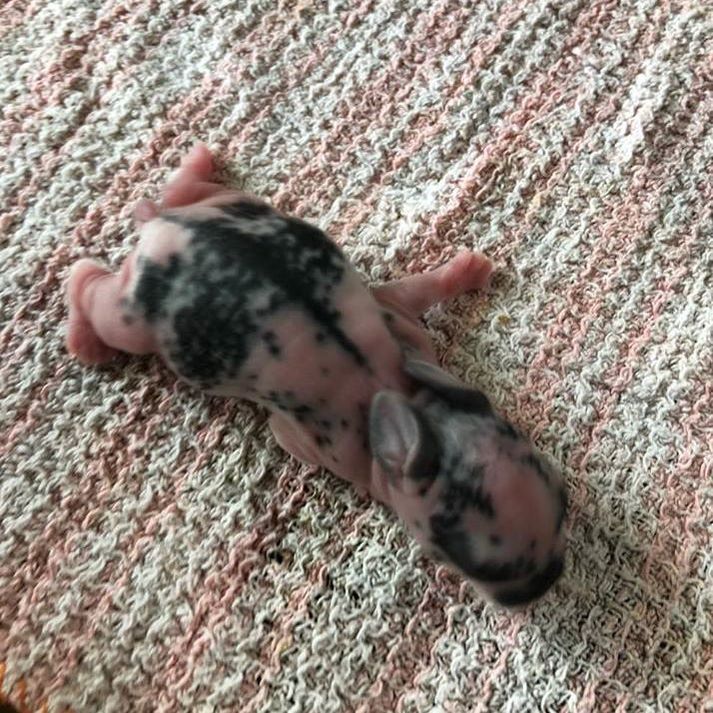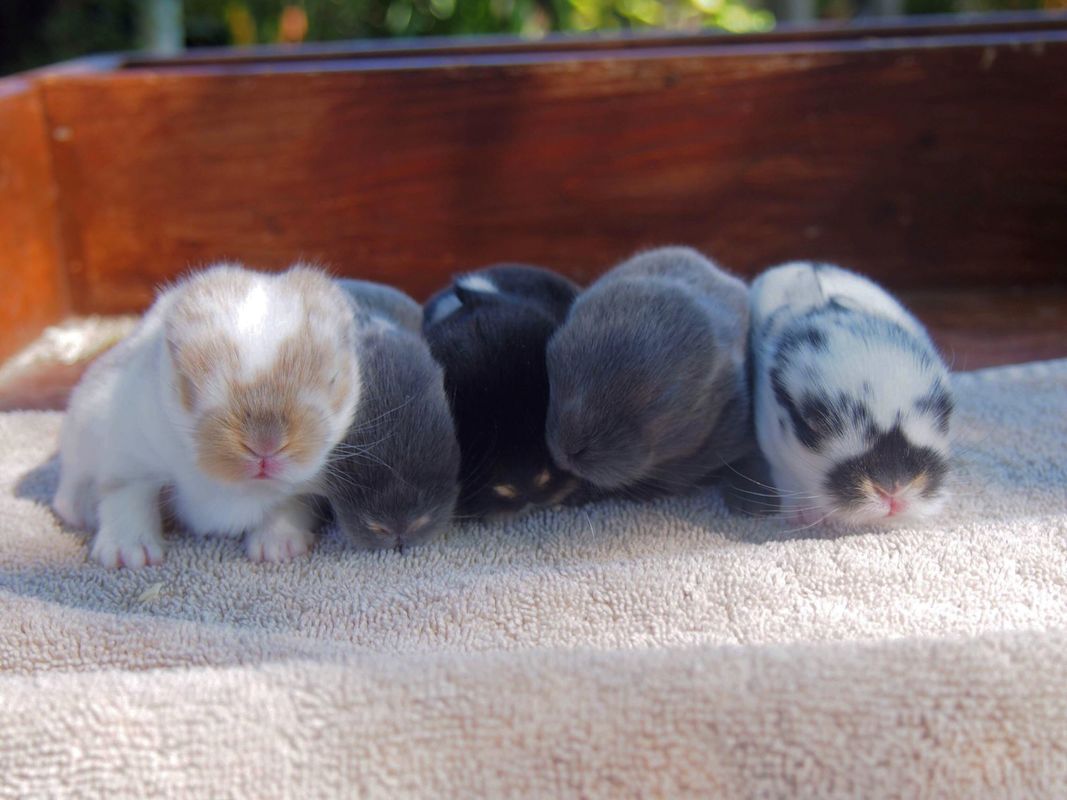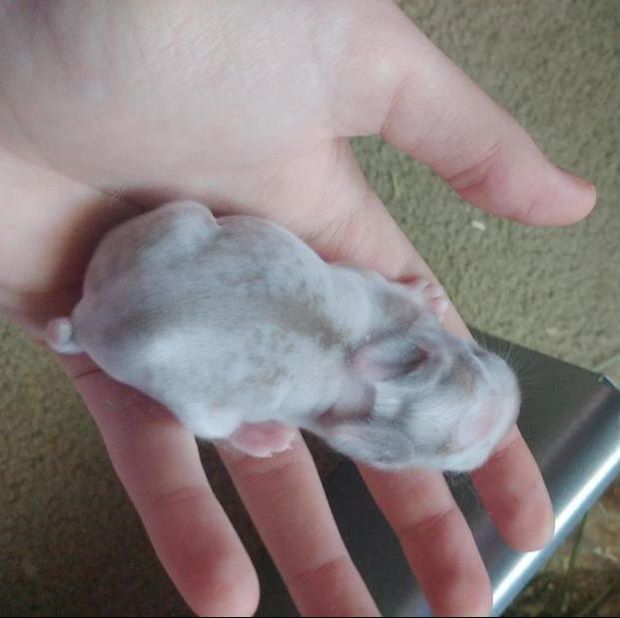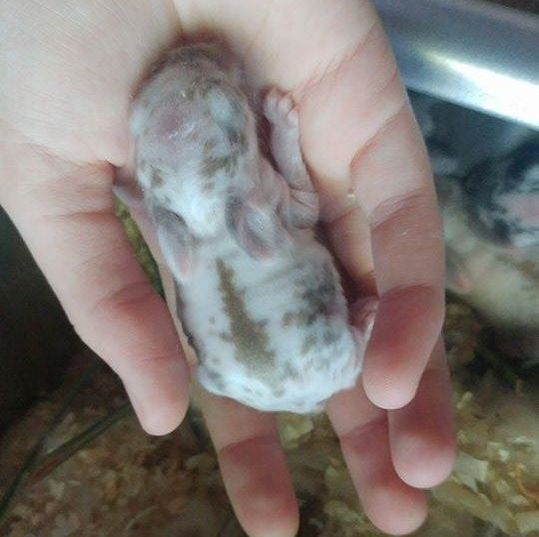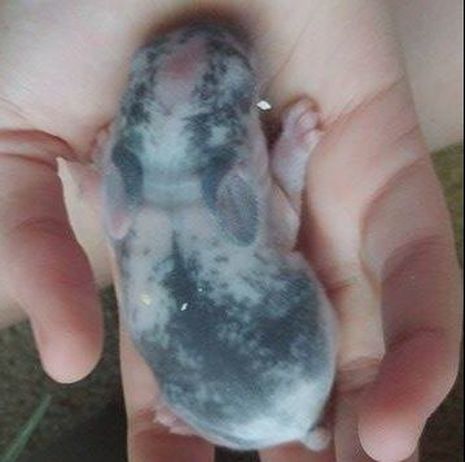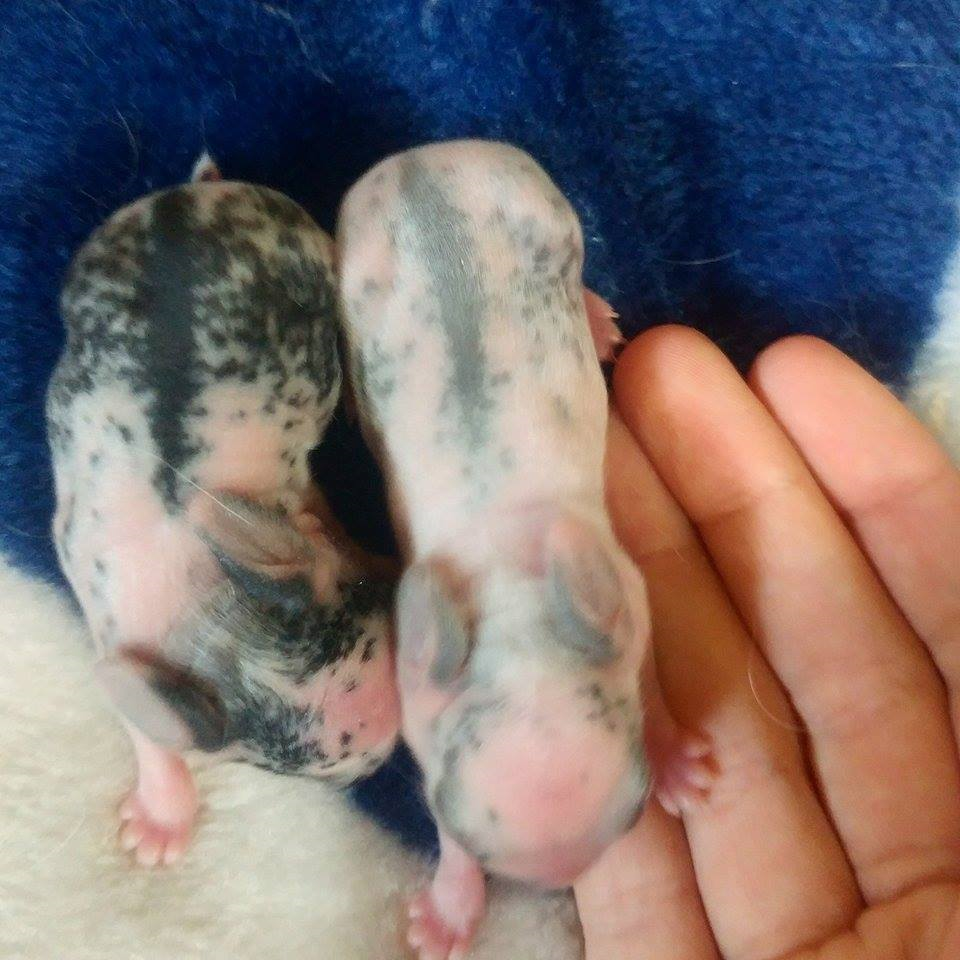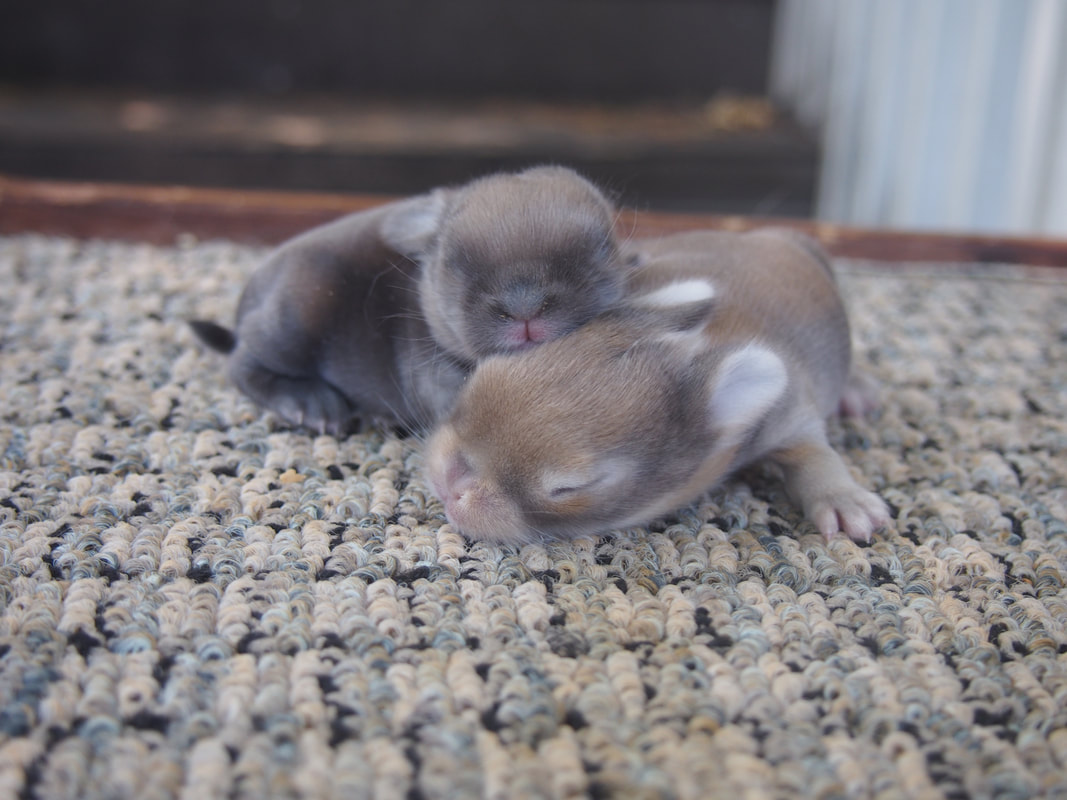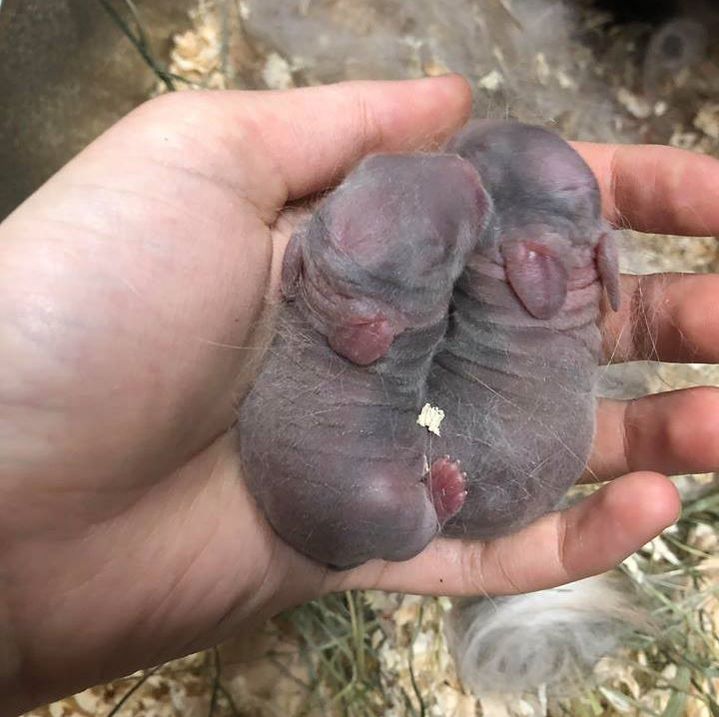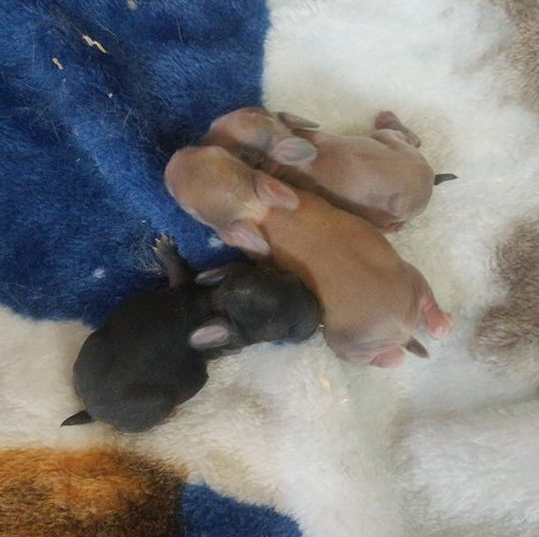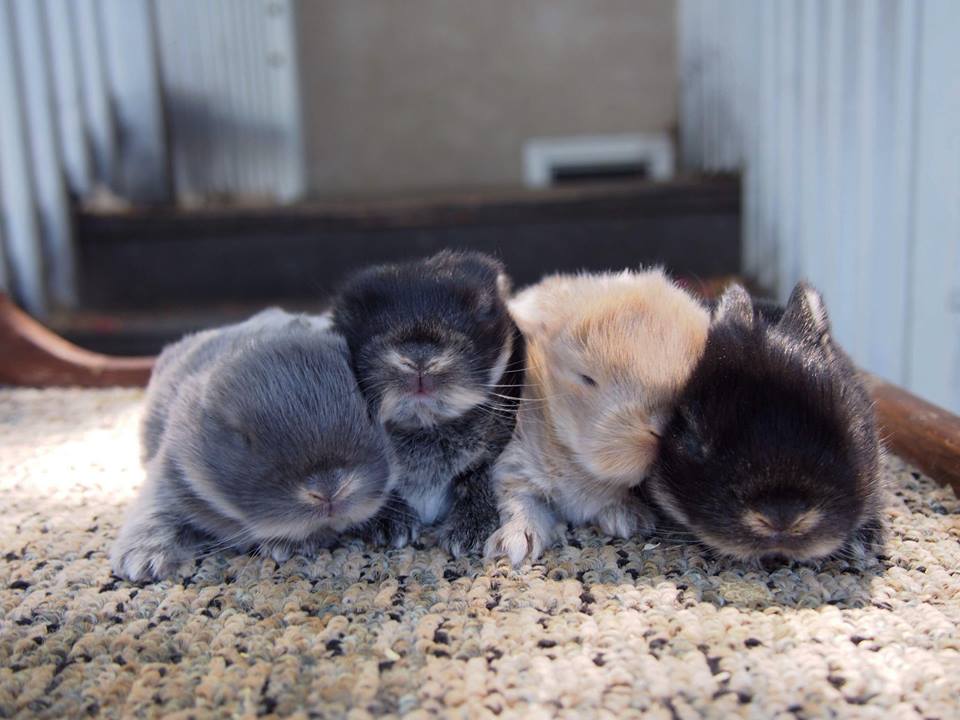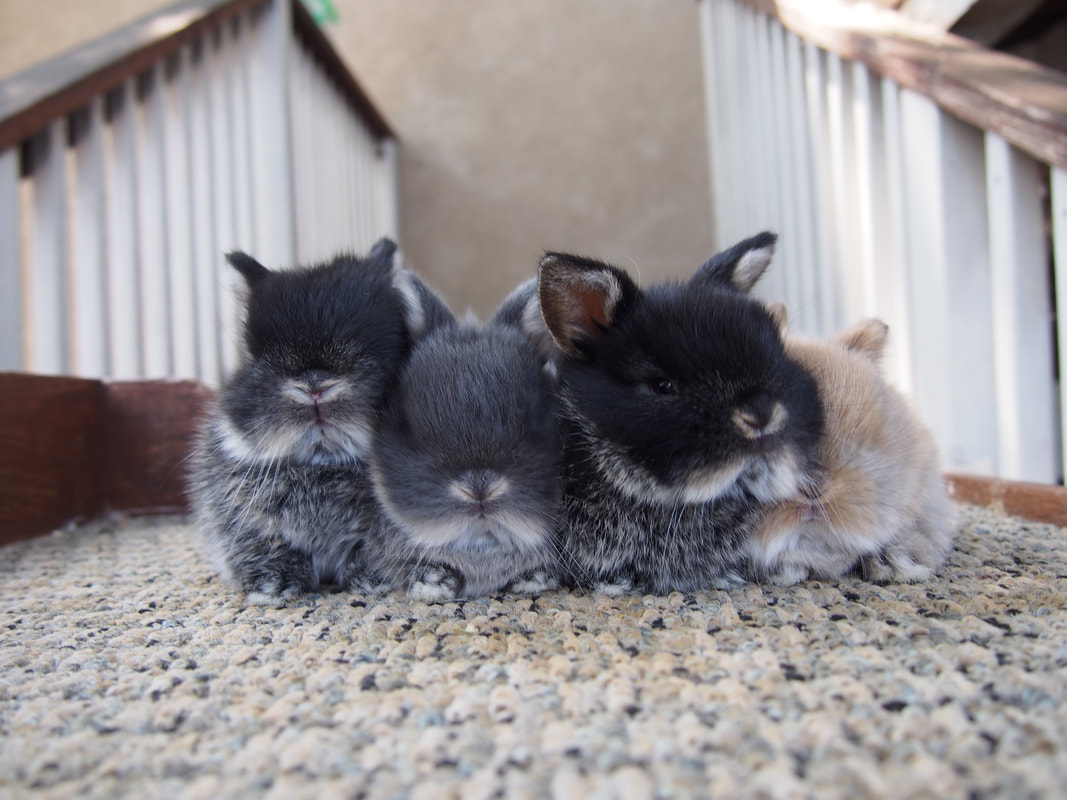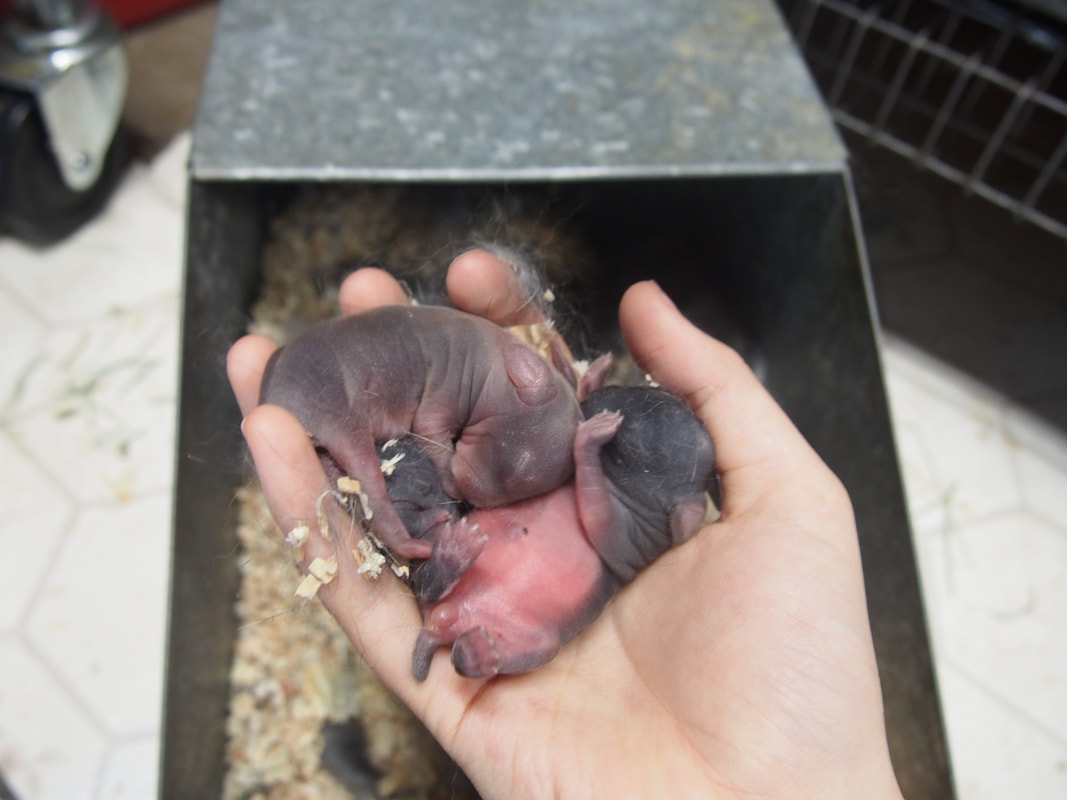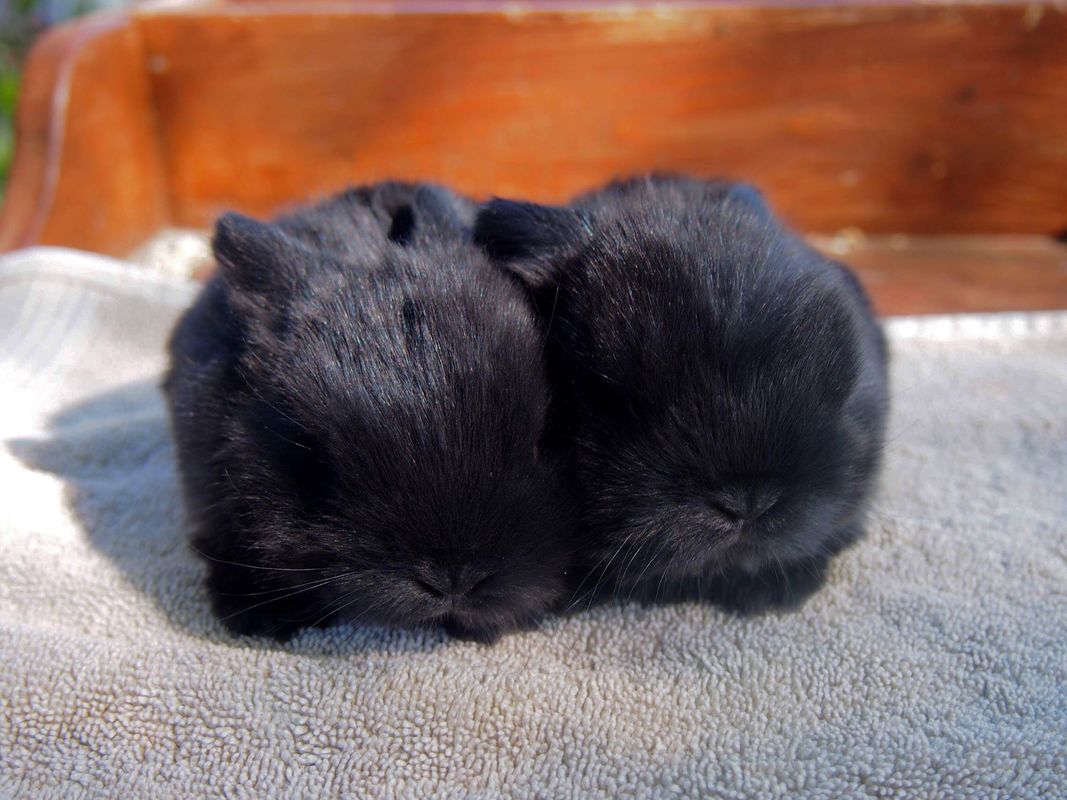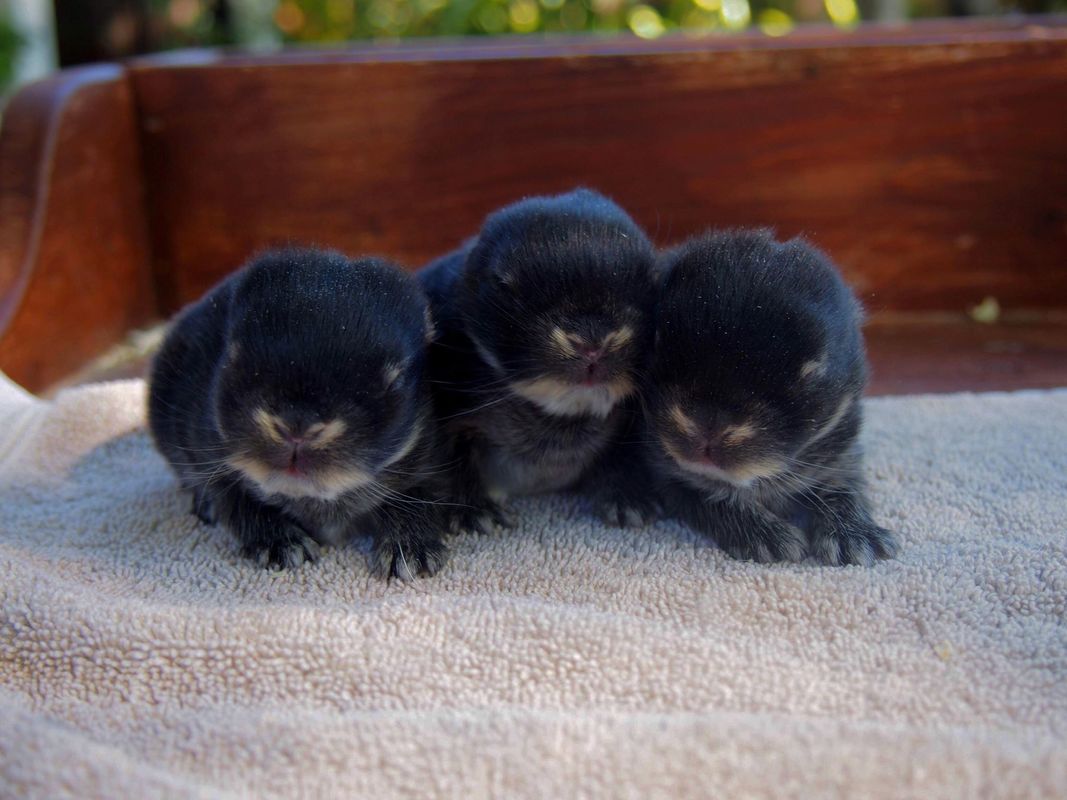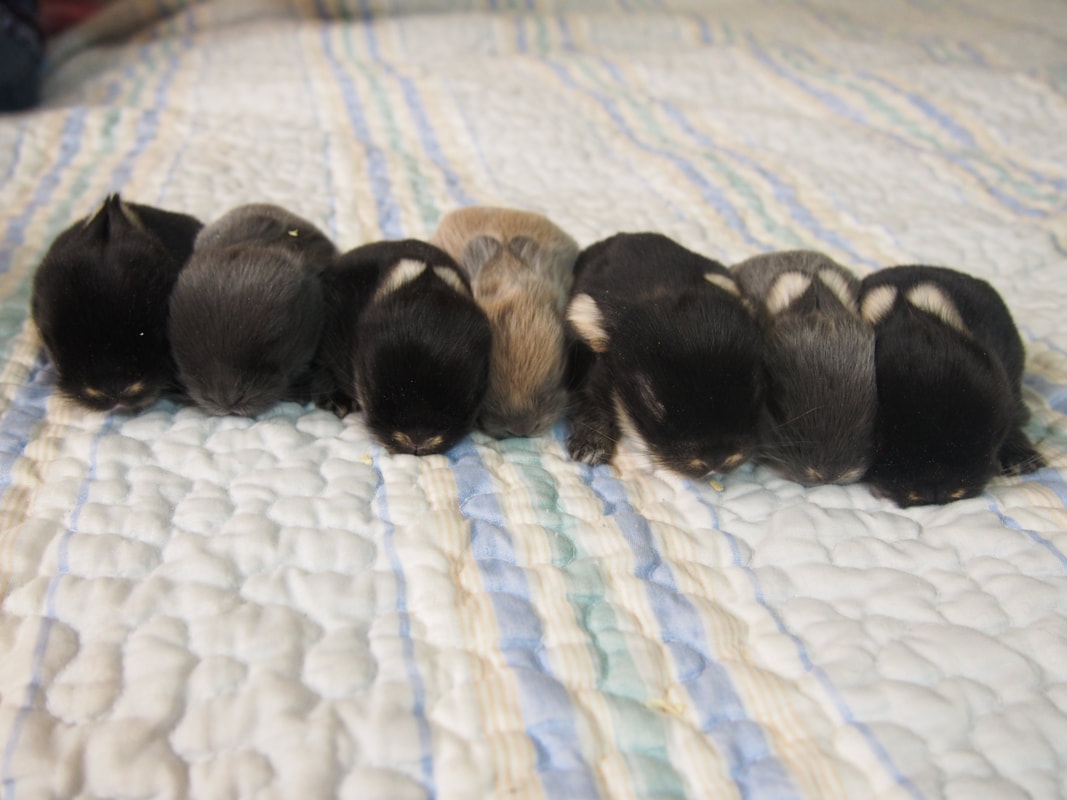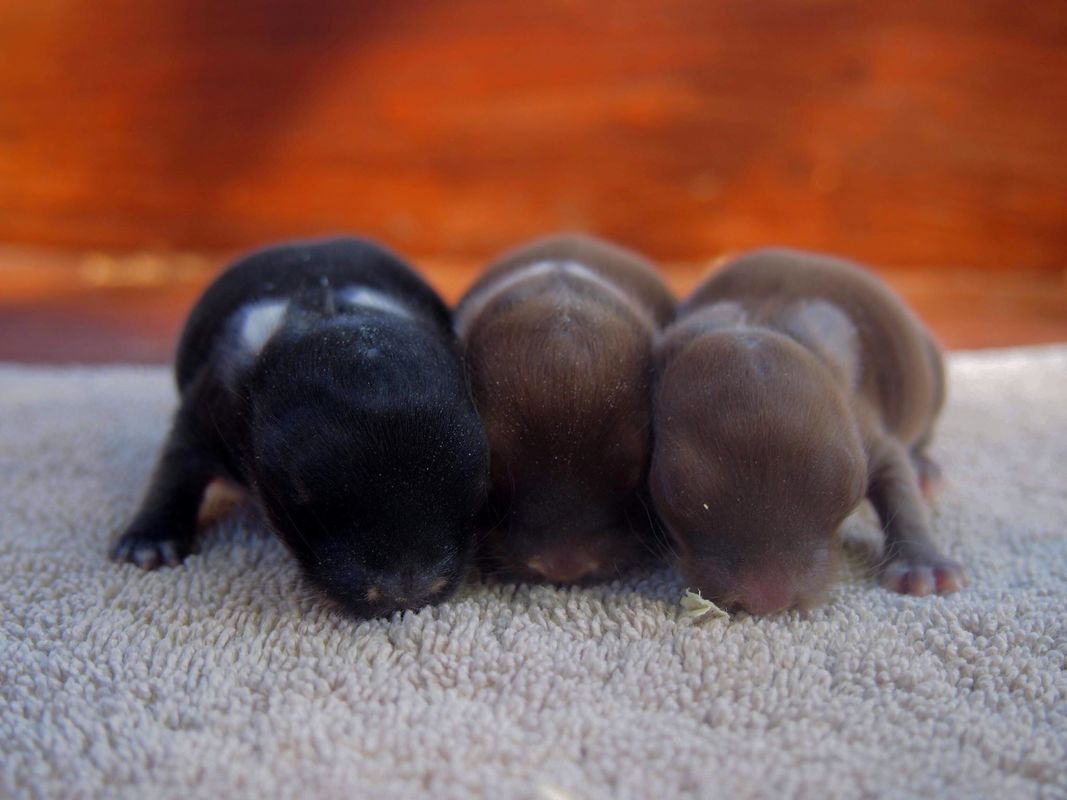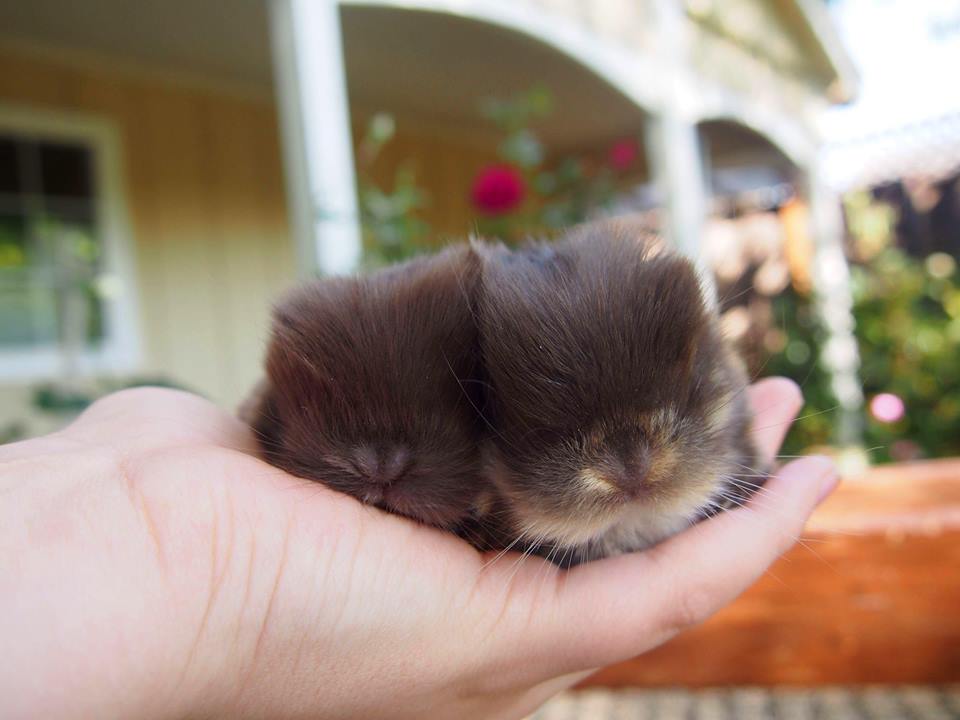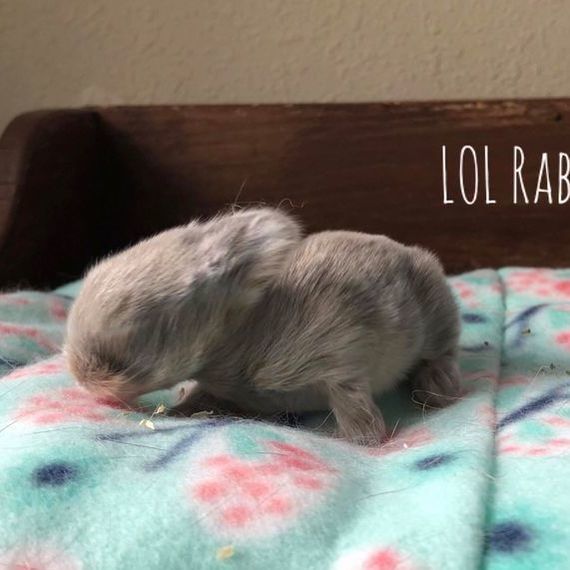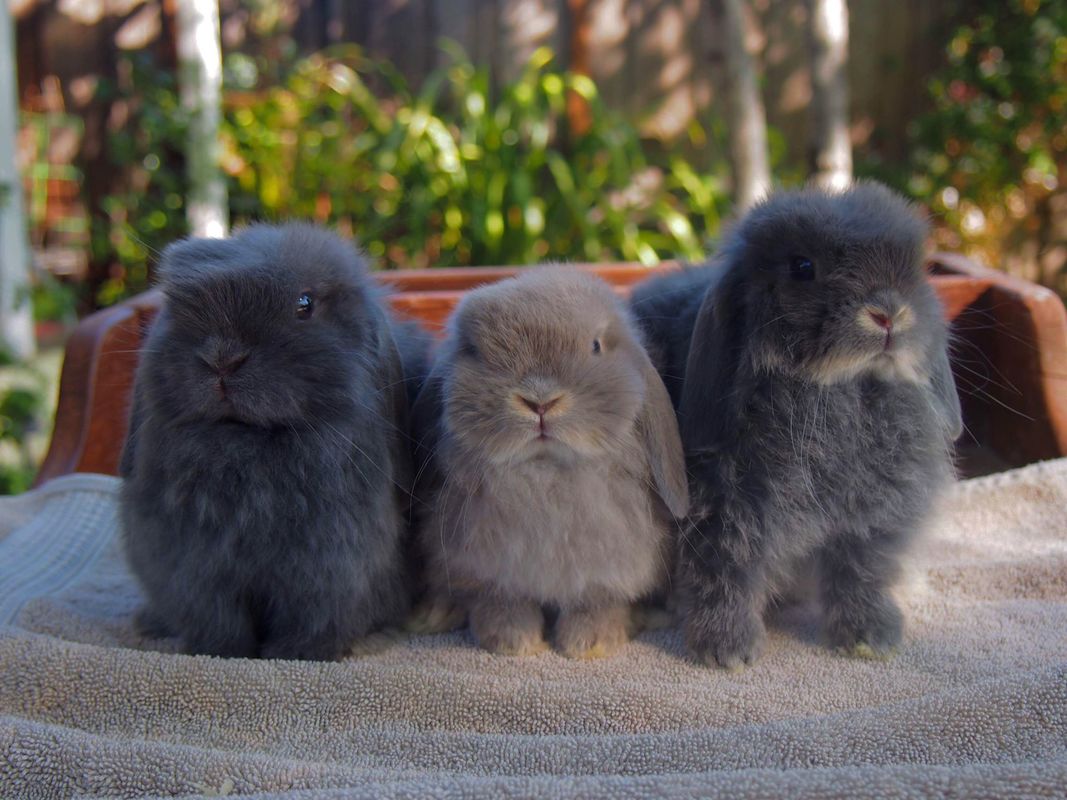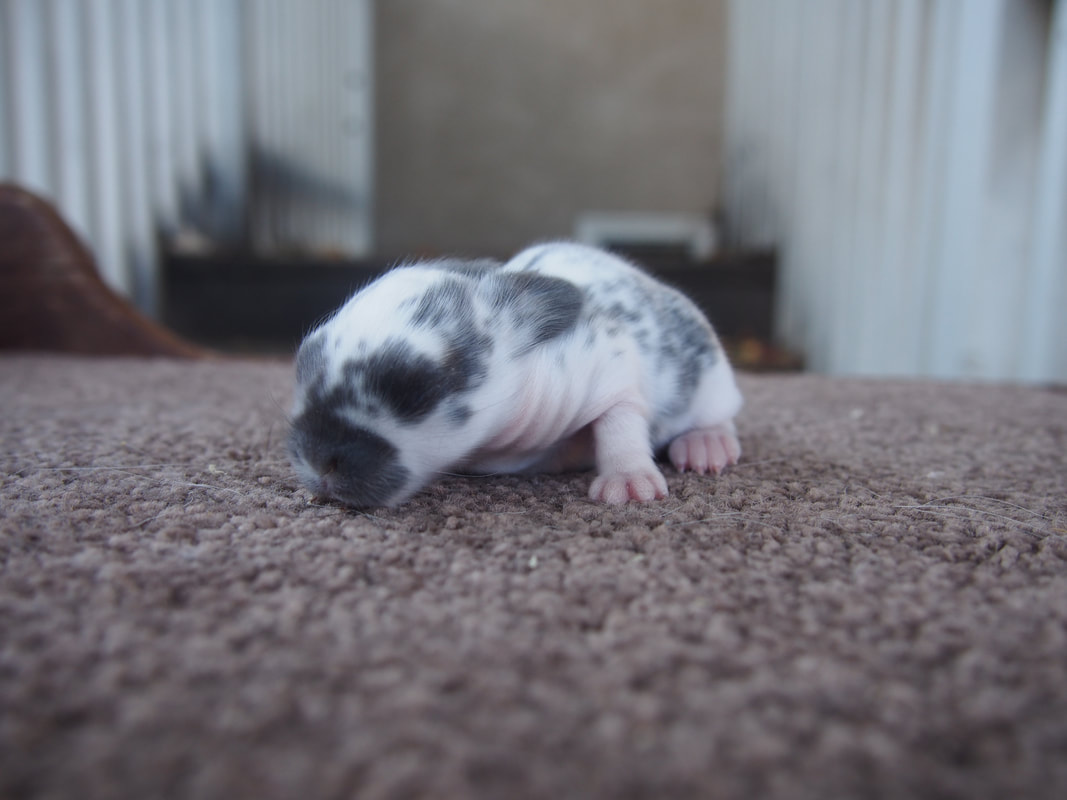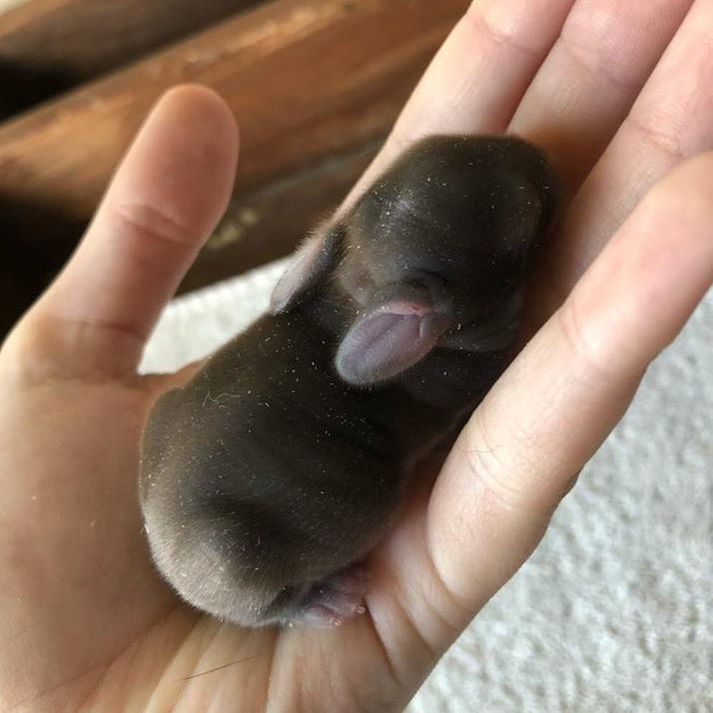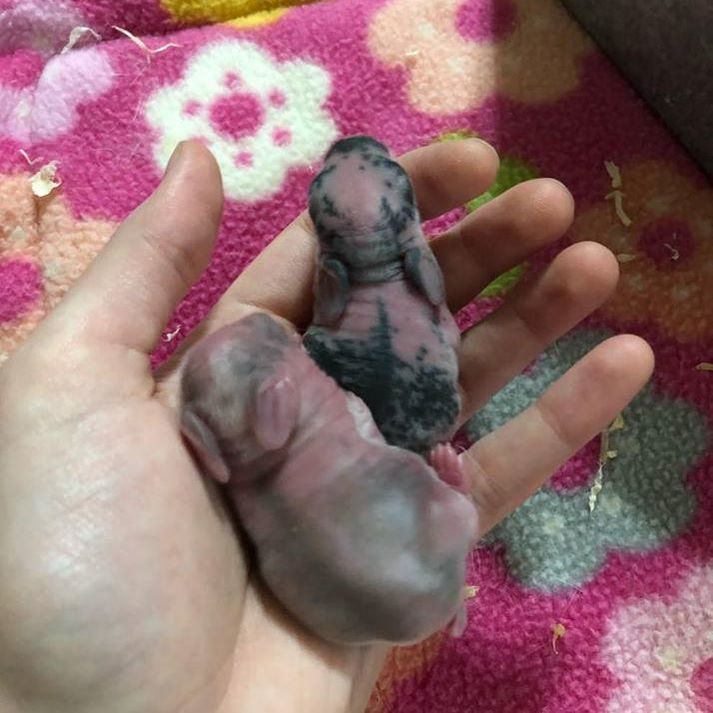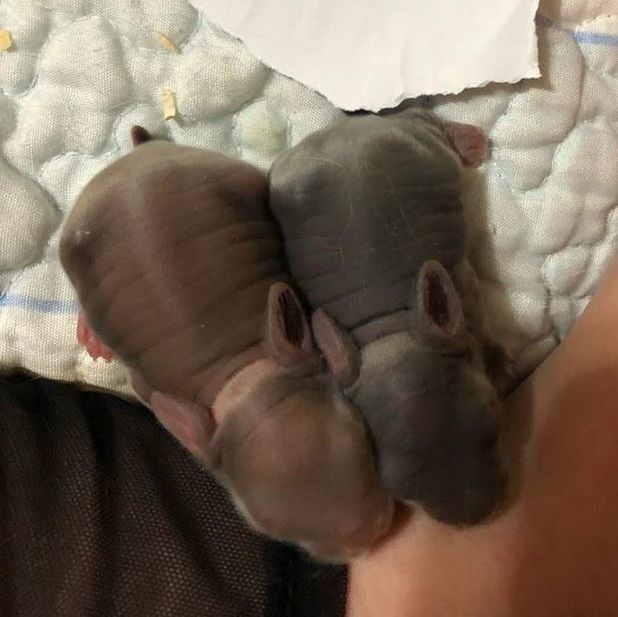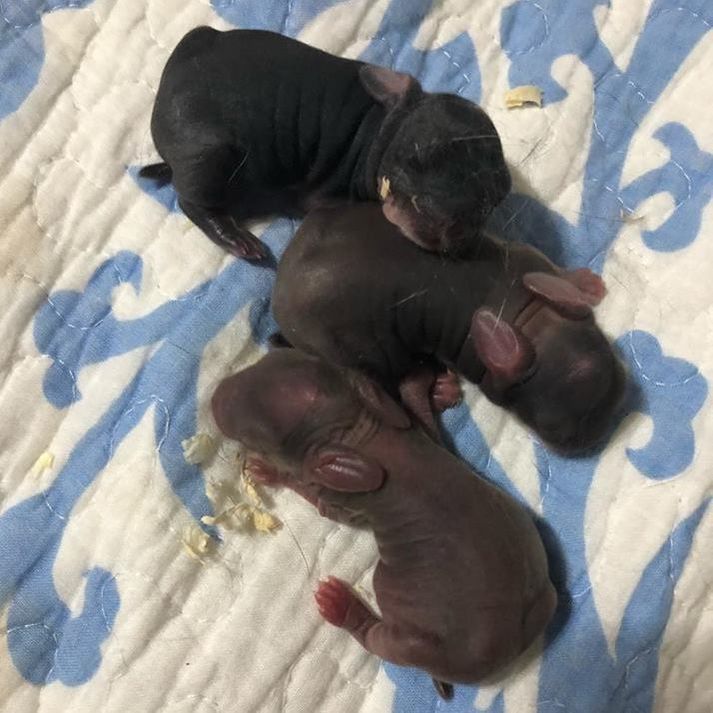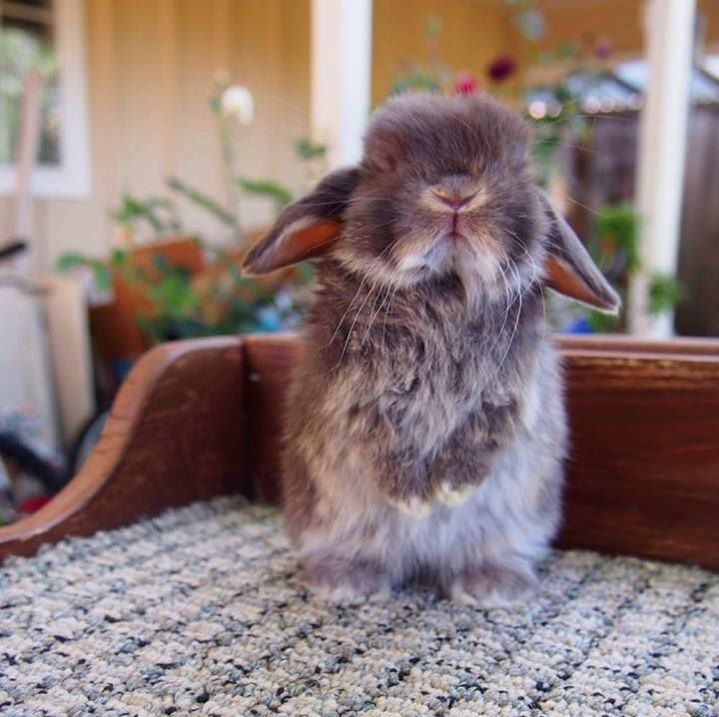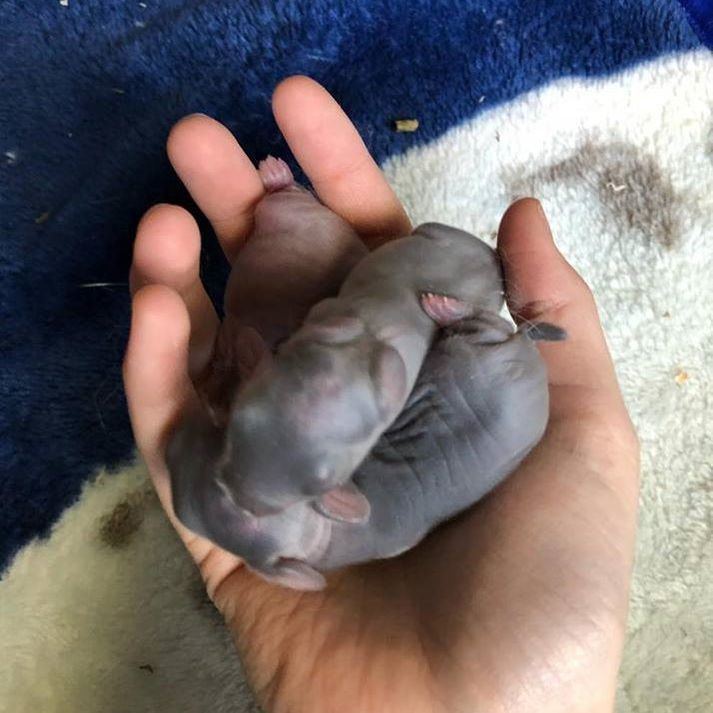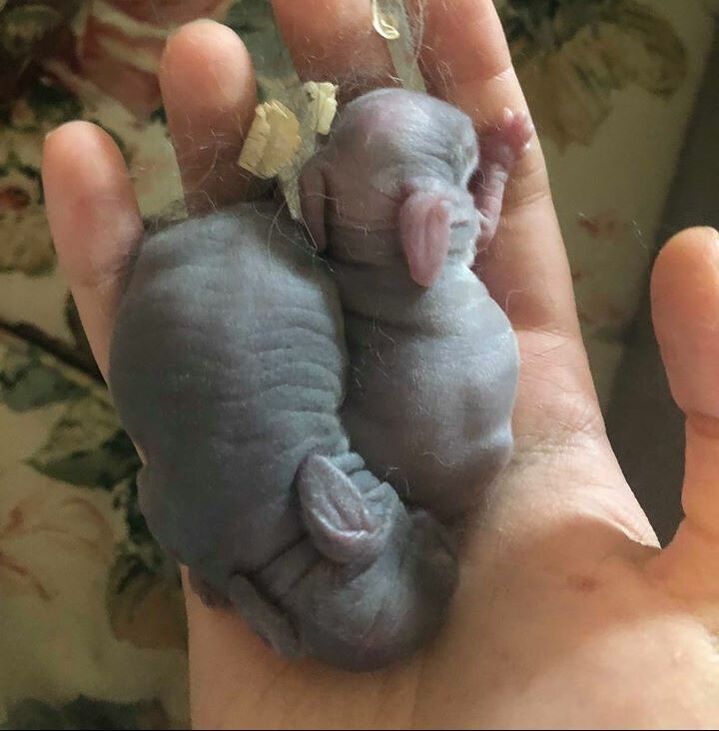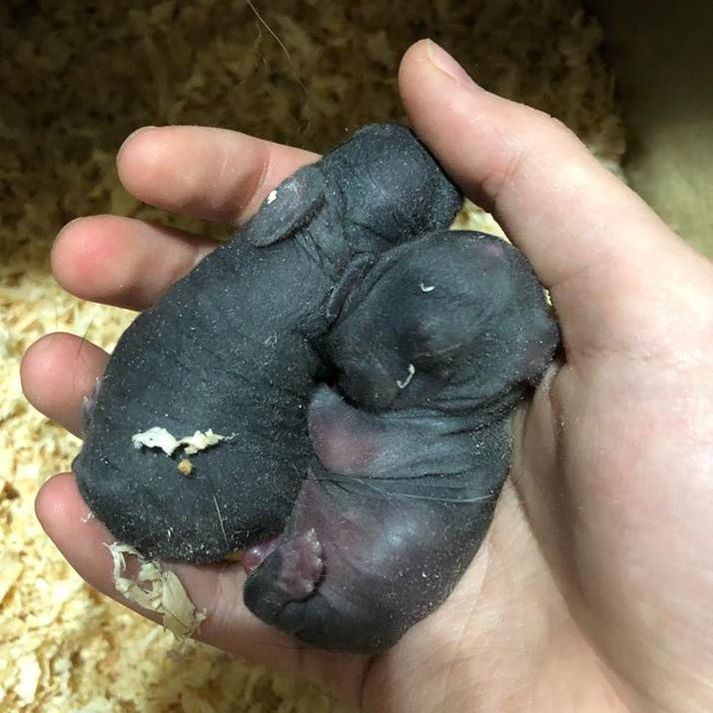Here you will find a disorganized mish-mash of pics of all the different colors I've produced so far. Hopefully it helps you identify that 'WTF'-colored mystery kit!
|
This is a litter that's probably 5ish days old.
On the top is a black fox (aka black torted otter). You can see the rust-orange tort color over the back, with a shaded line on the side where the kit turns grey over the flank. The reason we know it's a torted otter, not a tort, is because of the light inside of the ears. The middle two kits are black otters. Notice the white ears that distinguish them from black selfs. The bottom is a blue otter. It has white inside the ears, so it is an otter, not a self. |
|
This is a broken blue tort. They are really hard to tell from broken blue torted otters at this age. However, if you look at her dark ears, you can see that she is in fact a broken blue tort, not a broken blue torted otter.
This one's made even harder by the fact the kit has white dipped ears! So you'll have to look at the deeper part of the ear to determine whether it's a tort otter or a tort. |
|
Here's a comparison of 1 day old broken otters. Left is a broken black otter, right is a broken blue otter. Notice the huge difference in body color between the black and the blue. Blacks are often mistaken for blues at birth, but when compared to an actual blue, there is a significant difference between the two varieties.
|
|
Getting closer to a week old. On the left is a black tort, on the right is a black tort otter. Notice the otter markings on the tort otter, such as the eye circles, lighter muzzle, lighter fur on the cheeks, nape of the neck and legs, and the obvious white ears. The tort lacks all of these features.
|
|
This is a slightly harder one. We've got the obvious black otter on the bottom, but what are the other two? One is a black torted otter, the other is a black tort. The way we distinguish them from above is by looking at the ears. The middle kit is the torted otter, as it has light ears. The top kit is a tort because it has colored ears.
*If the kits were flipped over, the torted otter would also have a white belly, whereas the tort's would be colored. |
|
Two weeks old with eyes open! We have a blue otter on the left. Notice the light grey base color with the characteristic otter markings on the nose and cheeks. The second to left kit and the kit on the far right are both black otters. These guys have a black base color with otter markings visible on their noses and cheeks. You can also see a bit of the light eye circles and ears on the kit on the far right. The kit second to the right is a black fox. Notice the orangey torted color, but with otter markings.
|
|
We have two visible kits in this picture. On the left is a chocolate otter. It could be easily mistaken for a black torted otter, but if you look at the sides, you can't see the characteristic line running down separating rust color from grey shading that is found in torts and torted otters. Chocolates are also typically slightly darker and richer in color than torted otters. It is not a chocolate self, because it has light ears. Therefore, it has to be a chocolate otter.
The second kit is clearly a black otter. It has light ears and a very apparent light belly. :) |
|
Here's a really fun one! Every other kit is a black otter, made apparent by white ears, eye circles, and otter lacing on the nose. The kit second from the left is a blue self. It is grey all over without otter markings. The middle kit is a blue tort. It is a light fawn color with blue on the ears and nose. It has colored ears, so is not a blue torted otter. The kit second from the right is a blue otter. It is blue with otter markings, such as the white on the ears and the lacing on the nose.
|
|
Here's a slightly hard one. On the left, we obviously have a black otter. The middle is a chocolate otter. It's much darker, richer, and more even in color than a black torted otter would be. You can just about see the nose lacing and light ears of an otter from this pic. The kit on the right is tricky, it was actually a very lightly colored chocolate self! This kit actually darkened a lot as it matured and became a regular chocolate color.
|
|
A slightly older litter, showing dilute varieties! The left one is a blue self. It is blue all over. The middle kit is a blue torted otter. It is light fawn with blue shading, eye circles and otter lacing on the nose and jowls. The kit on the far right is a blue otter, made apparent by the ticking on the chest, eye circles, and lacing on the nose and jowls.
|
|
Apologies for the Sharpie on these babies' ears, these two were being fostered to another litter and had to be marked to distinguish them. :) On the left we have a black torted otter. You can just about make out the shading into darker color on its sides, making it torted. The ears are light, as is the nape of the neck, making it a torted otter. The kit on the right is clearly blue, and has light ears and light nape of the neck, making it a blue otter.
|
|
On the top is a solid black otter. Notice the light cheek and inside of the ear. In the middle is a chocolate otter. It has a rich, even shade of brown without tort shading, and has light inside the ears. On the bottom is a chocolate self. It again has a rich, even shade of brown, but lacks the light ears of the chocolate otter.
|
|
Hard to make out the kit being squished by his siblings, so let's ignore that one. :) The kit in the middle is a blue self. An even, blue cast over the entire coat and doesn't have light ears like an otter would. The kit closest to the bottom of the picture is a blue otter. It has the same blue cast to the coat, but has light on the nape of the neck and inside of the ears.
|
